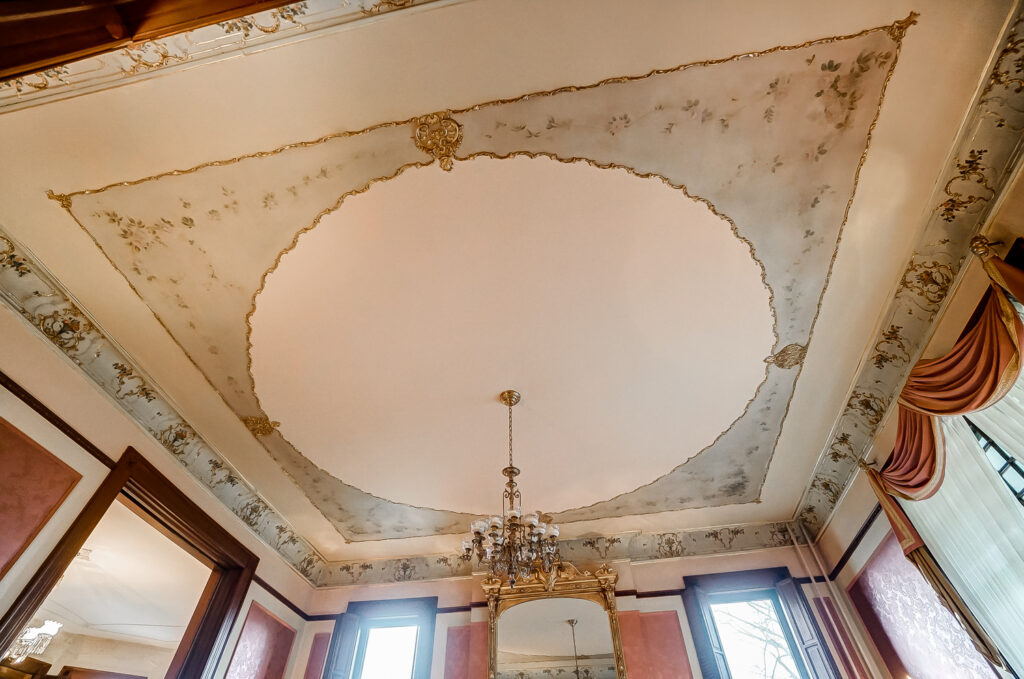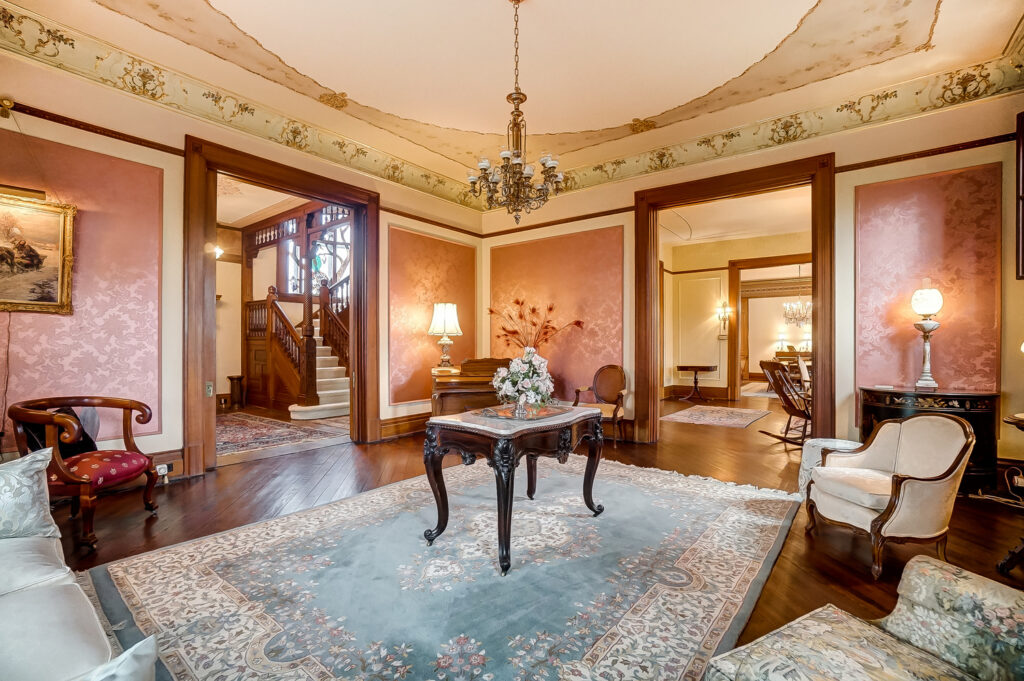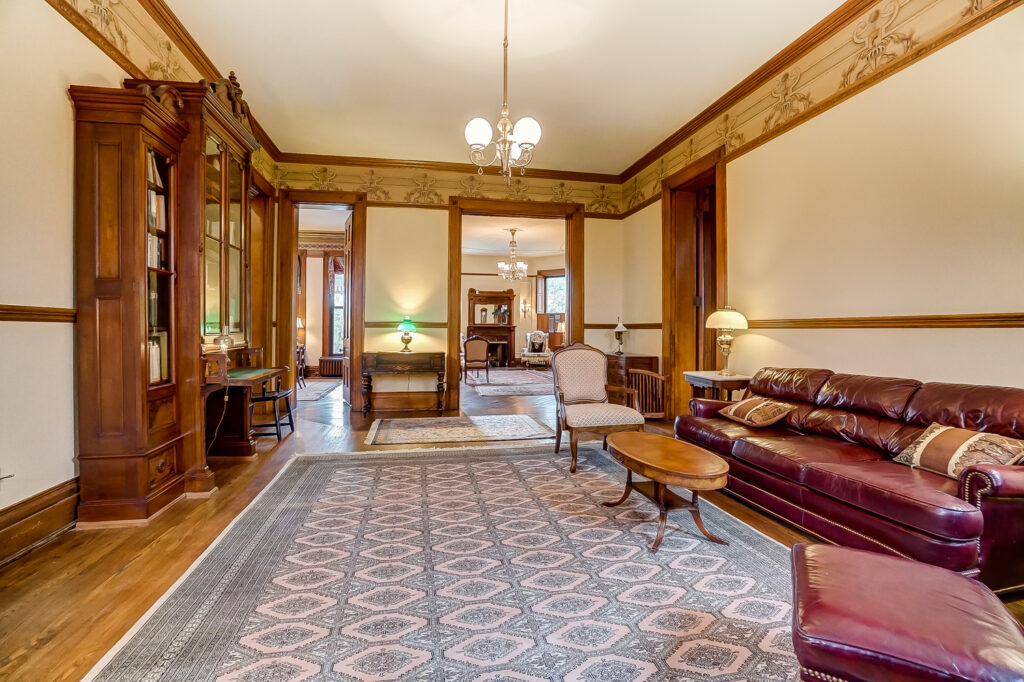Mom’s house:
After graduating high school I moved with my mom and step dad to Ohio. I spent a year working alongside mom and some great crafts people to restore this house. This is where I started my life long quest to restore old buildings. Why would anyone spend so much time and treasure racing into their future to bring back the past.
this page under construction
The history as I know it.
The house was built between 1886 & 1888 by John Poe. In the 1930’s-40’s the house was converted to a rooming house. Some time after the war the house returned to a single family residence.
Various families lived in the home continuously through sometime in the 1970’s. The house sat empty for a period of time. It was vacant long enough for someone to back a moving truck up to the house and steal 5 of the 11 fireplace mantels, stain glass windows on the steps and 4 chandeliers.
As with everything, each owner changed the house. Some wanting to modernize it; removing picture molding, painting over stencils, hang heavy grass wallpaper in the kitchen and dining room. Additional bathrooms where added. Some wanted bold colors and painted the walls such a dark color purple the the violet ceiling looked white. It was not till we got two coats of off-white paint on the walls that we could even tell the ceiling was violet, not white. The one thing many of the owners did not do was maintenance.
In the mid 1980’s when this house was purchased the bones where there, not much else. But the bones are impressive. The brick walls are all, including interior subdividing walls, 3 courses of brick thick over stone sitting on bedrock.
Going Back to the Gilded Era
The first room we started was the front parlor.

The center ceiling painting is original a few of the plaster appliqué where missing. The cove molding was painted one color, none of the gold leafing was still visible.
Sitting on a chair on top of a scaffold buck, we first use toothbrushes and Ivory bar soap and proceeded to scrub through 100 years of paint, one layer at a time. Yep just like your teeth small circular motions. We uncovered one of the cove cornucopias and bouquet to discover colors from the 1880’s. I then got out my artist oils and repainted all of the flowers and cornucopias.
The next step was to replace the missing plaster appliqué. You can still get these pieces from Decorators Supply in Chicago, IL https://decoratorssupply.com/
On with the gold. Gold leafing is really not a complicated process. You first paint on the sizing. The color of the sizing will affect the color of hue of the gold. (We are getting into color territory I am not super versed so bare with me.) Common size colors are yellow and red. The yellow produces a brighter gold. We used the yellow size.
After you paint the sizing on, you apply the gold to the still tacky sizing. The gold we used came out in rolls just like teflon tape you use on plumbing pipe threads. To apply the gold you use a stencil brush (stiff short but very soft approximately 1/2″ round). You start by using the tip of the brush. As you unroll the gold you lightly push the gold onto the sizing in dapping motions. After you cover the sizing with the gold you use the same brush and in brushing motions (always a light touch) smooth and polish the gold in place. That’s it, that is all it takes.

Discovering Whats Missing
We will move to the library, but this process was done through out the house
To find out what was originally on the walls we took halogen spot lights and held them right up against the walls and shined across the surfaces. It is hard to believe but there is no mistaking the small difference a couple of layers of paint make. Shining the light across the wall faces will show all the locations and sizes of old moldings.
Throughout the house there were picture moldings, some chair rails and some crown moldings. We found samples of the moldings in the attic (Thanks to the previous owners. Even though they removed it, they at least kept some of it.).
We were able to match it to each room on the first floor by size and that each room on the first floor used a different wood. Butternut Walnut, Cherry, Oak, and Tiger Stripped Long Leaf Pine. The pine was upstairs in the kitchen.
Some of the moldings had wood doe inlays. Again Decorators Supply had the matching molds.
In the front parlor we found that there were small molding that panelizes each of the wall sections. Unfortunately there were no samples to match it in detail but at least we had the width.


